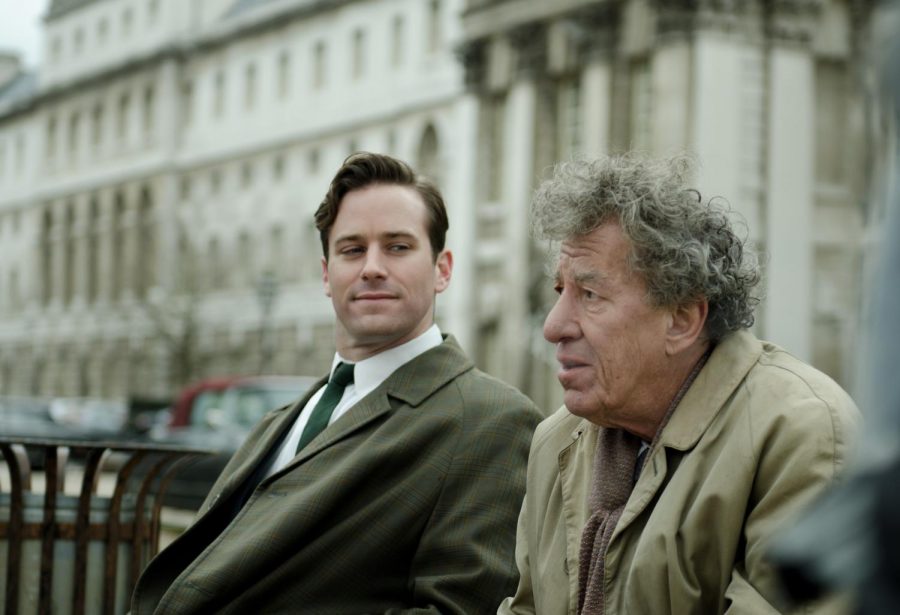‘Final Portrait’ Illustrates a Most Compelling Friendship
Courtesy of Paris Taghizadeh / Sony Pictures Classics
Armie Hammer as James Lord and Geoffrey Rush as Alberto Giacometti in ” Final Portrait.”
March 26, 2018
In 1964, Swiss artist Alberto Giacometti invited his friend, writer James Lord, to his studio with the hopes of painting his portrait. Lord agreed to spend the afternoon with Giacometti, blissfully unaware of how unrealistic this preconception would be. Upon arriving at
Giacometti’s grey, clay-covered and paint-splattered cave, Lord learnsedthat Giacometti believed no painting could ever truly be finished, thus beginning an experience Lord had not bargained for. “Final Portrait,” the latest film by Stanley Tucci, follows this unconventional experience.
Giacometti (Geoffrey Rush) is the picture of a gruff, grizzled, disillusioned artist who prefers long bouts of silence. His studio is uncontrollable, and he simply tosses bundles of money aside in the mess. Lord (Armie Hammer), on the other hand, is young and All-American – his suits are perfectly tailored, and his hair is groomed to sit smoothly atop his head. The two are an unlikely pair, but the film proves that authentic human connection and mutual fascination can arise in unexpected places.
As Giacometti continues to extend the portrait’s deadline, lengthening Lord’s trip every day, Lord grows more and more frustrated. Giacometti paints and repaints over all his work when he is displeased, restarting the cycle and sending the process into a seemingly endless loop. Throughout this tediousness, Lord takes up swimming to deal with both boredom and the emotional toll of working with a tortured, chain-smoking artist. Giacometti’s internal conflict for perfection and Lord’s struggle to remain patient challenges them both in creative and situational ways.
“Final Portrait” is shot intimately with a muted color palette which emphasizes the presence of what color there is. It is both funny and heartbreaking, a film that neither romanticizes Giacometti and the artistic process nor entirely condemns it. Giacometti, in the movie as in real life, maintained a long-term and public affair with a French prostitute (Clémence Poésy) whom he spoiled instead of his wife (Sylvie Testud).
He was prone to occasional outbursts of absurdity and anger. He tended to torture the human subjects of his art by trapping them in the perpetual circle of starting over and over again. Giacometti was also a brilliant artist, renowned for his pieces through Cubist, Surrealist and Expressionist periods. Tucci himself paints Giacometti in the third dimension, neither erasing his immorality nor minimizing his artistic accomplishments, making for a captivating viewing experience.
The film concludes anti-climatically, but this does not take away from the movie. Instead, it reminds one that not everything in life requires a neat and tidy ending — some works are best left in perfect states of the unfinished.
“Final Portrait” was adapted from James Lord’s 1965 memoir “A Giacometti Portrait.” It first premiered at the Berlin International Film Festival last February and opened in New York on March 23.
A version of this article appeared in the Monday, March 26 print edition. Email Jillian Harrington at [email protected].
























































































































































